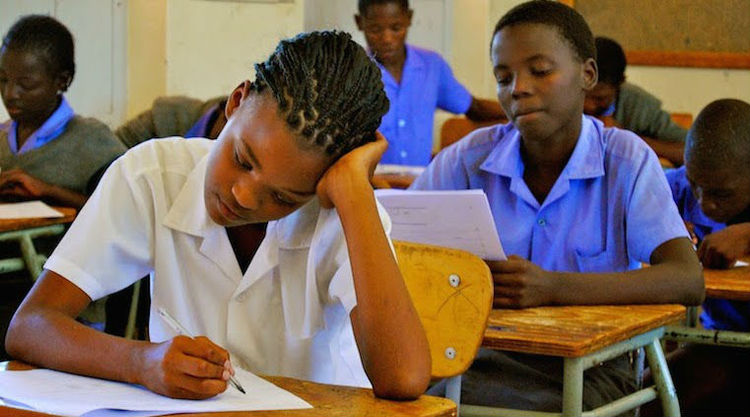
The Sunday Mail

Livingstone Marufu —
How the pendulum has swung in the education sector provides material for an interesting narrative. The 2016 national Grade Seven examination results show that examination performances have vastly improved ever since the adoption of a system that require pupils to sit two papers per subject.
Another interesting piece of information is that girls have academically eclipsed boys at that level. The national pass rate increased from 25 percent in 2010 to 42,9 percent in 2016.
Although the girls’ remarkable feat and the new academic high have given parents and guardians every reason to smile, the lingering question on many people’s minds has been the secret behind this success.
Since the 1980s, Grade Seven candidates sat four papers in four subjects. When two papers were introduced per subject in latter years, there was concern all around that children would fail to cope with this increased intellectual pressure.
And to be fair, the results of earlier years show that a good many children did struggle. Yet, good tidings abound in 2016. Respected academic Dr Caiphas Nzimasanga said: “We have witnessed a great improvement over the years due to the availability of resources in schools, good teaching methods, many books at schools and the availability of internet around schools.
“If we continue at this pace, we may be able to reach the 50 percent mark in a few years to come. Generally, we are moving in the right direction.”
Dr Tafiranyika Zhou, president of the Progressive Teachers’ Union of Zimbabwe, weighed in: “I’m not fancied by this improvement as the pass rate is still very low, way below the expected pass rate (50 percent).
“We expect them to reach around 65 percent as primary school is a basic education level that most students should pass with ease. All the same, it’s a very encouraging improvement for us.
“We have improved because we now have a lot of books in schools, e-learning, high pupil-book ratio and all key textbooks for English, Maths, General Paper and Shona.
“As a result of these resources at their disposal, we expect great improvements in the next few years to come. The other thing we have to put in mind is that the majority of primary schools now have computers, which makes most of them computer literate.”
Zimbabwe School Examinations Council statistics show that this year’s Grade Seven pass rate is higher than last year’s, with high scores across subjects, particularly indigenous languages.
Shona registered the highest pass rate at 86,31 percent, and Tshivenda the lowest at 72, 2 percent. Pass rates for English, Mathematics and General Paper were 56, 43 percent, 56,47 percent and 47, 96 percent, respectively.
Further, candidates with special needs passed remarkably, with the visually-impaired registering an 80 percent pass rate. The overall pass rate for female candidates was 45,29 percent compared to 40,43 percent for males.
In 2010, 303 978 candidates wrote examinations, recording a 25 percent pass rate. The following year, 288 365 pupils who sat for the exams recorded a 28 percent pass rate, while 292 375 wrote the exams in 2012 and 31,5 percent passed.
In 2013, some 299 673 pupils attained a pass rate of 32,3 percent while 306 490 registered a pass rate of 38,13 percent in 2014. Zimsec spokesperson Ms Nicky Dhlamini told The Sunday Mail: “The above figures show the changes in Grade Seven candidature and the national pass rate from 2010 to 2016.
The data also shows that the candidature increased from 303 978 in 2010 to 329 549 in 2016, whilst the pass rate increased from 25 percent in 2010 to 42,9 percent in 2016.
“This may suggest that there is a marked improvement in the quality of education in Zimbabwe’s primary schools. In general, there is a remarkable improvement in the performance of both male and female candidates. It can, however, be noted that female candidates performed better than male candidates since 2010.”
Ms Dhlamini continued: “There were 33 candidates whose gender was not indicated. The 2016 national pass rate for both school and private candidates stands at 42,90 percent, recording an increase of 1,29 percent from 41, 61 percent in 2015.
“The national pass rate for school candidates is 43 percent, which shows an increase of about 1,18 percent from the 2015 national pass rate of 41,82 percent. The statistics show that the 2016 results are almost the same as last year’s since there is a slight increase.”



